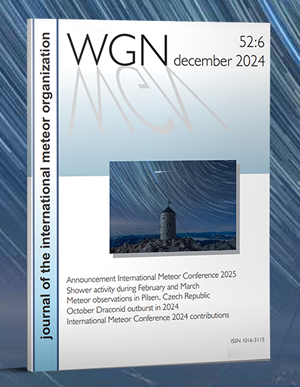The Perseids are one of the most exciting and dynamic meteor showers;
producing fast-moving shooting stars throughout July and August.
Based on IMO observations from recent years,
we expect the “normal” peak of ~100 meteors per hour to occur in the night of August 12-13 between 18h and 7h Universal Time.
The shower surprised on several occasions over the last two decades by showing outbursts of 150 to 400+ meteors/hour
due to the Earth passing through regions of higher density in the dust stream (e.g., ZHR ~200 last year).
Simulations by Jeremie Vaubaillon and Mikhail Maslov
indicate that we may again encounter ‘dust trails’ this year, left behind when the parent comet passed the Sun in the years 441, 1479 and 1862.
Unfortunately, the distance to the nearest trails is expected to be somewhat larger than last year, and their timing is thought to favour only regions around the Pacific Ocean.
However, the predictions are uncertain and worldwide observations by amateur astronomers are required during all nights near the maximum to verify and improve the models.
New Moon on August 10 creates perfect conditions to observe the shower.
Perseids are best observed after local midnight, when the radiant gains altitude in the sky.
In fact, highest rates are visible towards the early morning hours when the radiant reaches its highest point.
We strongly encourage visual observations to be made according to the standard procedure
and submitted through the online report form.
Such observations will automatically be included in the ZHR activity graph below (click for more results).
Activity graph below is updated every 15 minutes – click for details.





 You saw something bright and fast? Like a huge shooting star? Report it: it may be a fireball.
You saw something bright and fast? Like a huge shooting star? Report it: it may be a fireball.  You counted meteors last night? Share your results with us!
You counted meteors last night? Share your results with us!  You took a photo of a meteor or fireball? You have a screenshot of your cam? Share it with us!
You took a photo of a meteor or fireball? You have a screenshot of your cam? Share it with us!  You caught a meteor or fireball on video? Share your video with us!
You caught a meteor or fireball on video? Share your video with us!